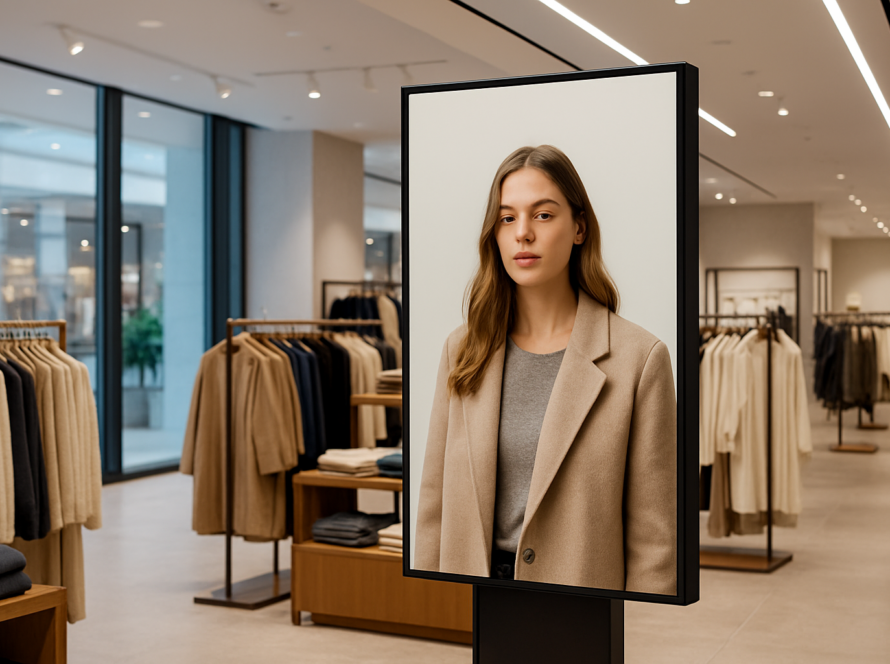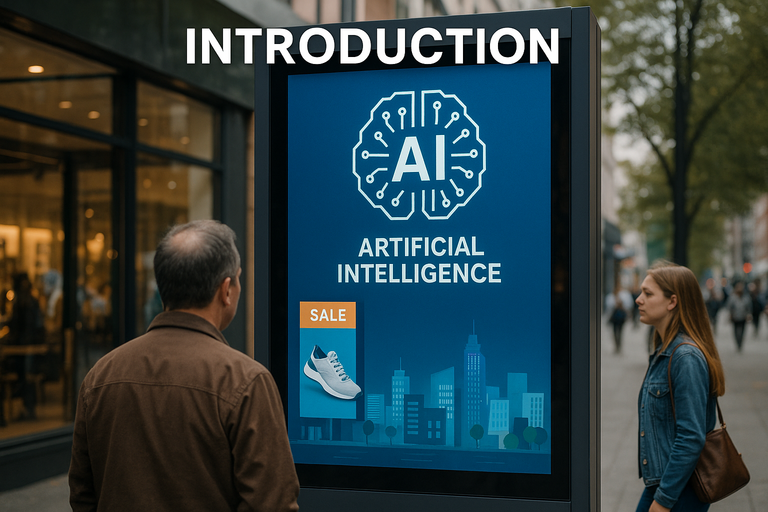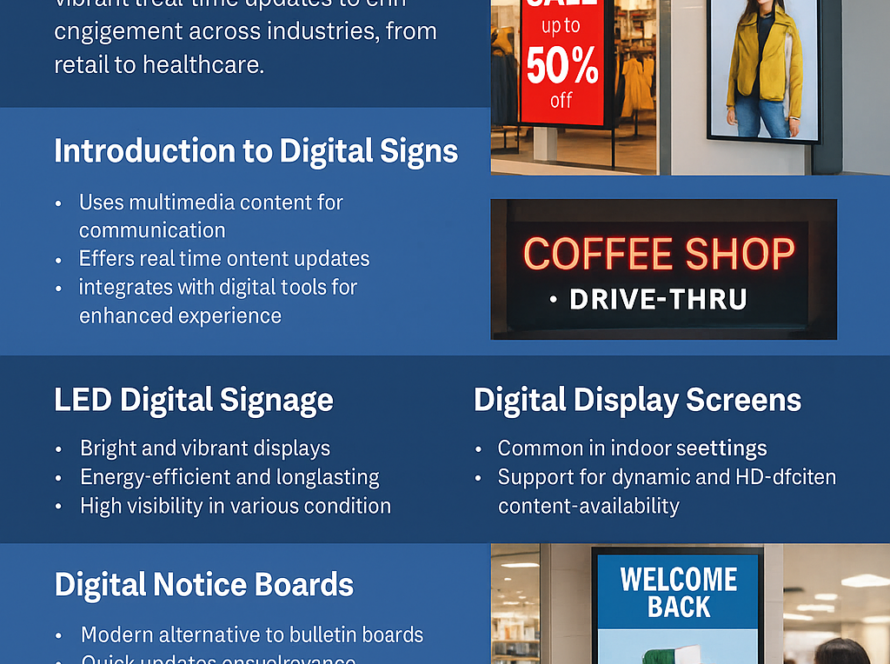In the rapidly changing landscape of customer engagement, the convergence of artificial intelligence (AI) and digital signage solutions is redefining how businesses communicate across Australia. Once simple electronic billboards, these displays are now the backbone of dynamic, intelligent ecosystems.
By harnessing real-time data, they personalise experiences, optimise operations, and unlock untapped marketing potential. As a result, AI-powered digital signage solutions are reshaping not only smart cities, but also retail chains and healthcare clinics.
This comprehensive exploration highlights the trends steering digital signage toward a smarter future, with real-world use cases and strategies for implementing intelligent solutions that drive measurable results.
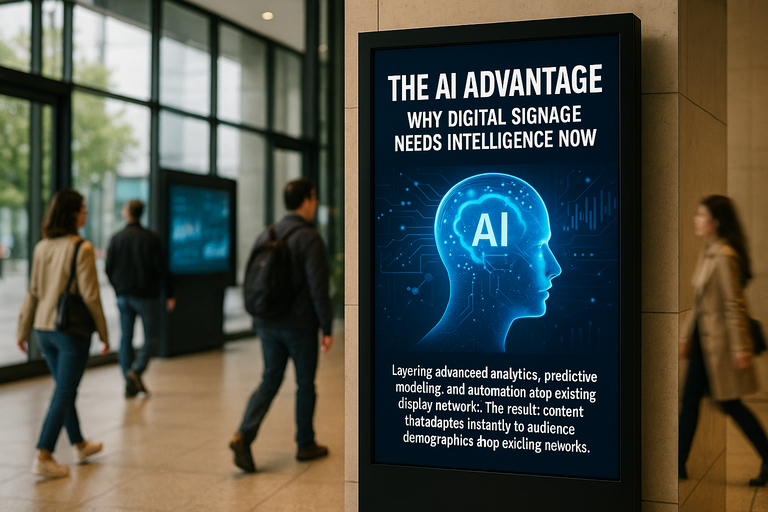
The AI Advantage: Why Your Digital Signage Needs Intelligence Now
Digital signage has moved far beyond static slideshows. The explosion of data, advances in machine learning, and demand for real-time responsiveness created the need for intelligent, adaptive platforms. AI delivers by adding advanced analytics, predictive modelling, and automation on top of existing networks.
Content now adapts instantly to audience demographics, foot traffic, weather, and even time of day. AI-powered platforms enable features such as dynamic content scheduling, anonymous video analytics, and predictive optimisation—while respecting privacy and compliance.
For organisations, the benefits are significant: reduced manual work, smarter hardware use, and real-time insights into what content drives engagement. This data-driven creativity was once impossible at scale. Industries from retail to transport are now racing to adopt intelligent digital signage solutions.

Industry Use Cases: AI Unlocking Value in Digital Signage
Retail: Personalisation, Engagement, and Sales Optimisation
In retail, AI-driven digital signage creates hyper-personalised experiences at the point of sale. Displays adjust to shopper demographics, weather conditions, or inventory data. For example, a screen may switch from luxury fashion to children’s products based on the detected audience.
Quick-service restaurants use AI-powered menu boards to adapt offerings by time of day or supply levels. Smart wayfinding in malls or airports guides visitors seamlessly. Every data point—from dwell time to conversion rates—feeds back into algorithms that continuously refine messaging.
Healthcare: Smarter Communication in Critical Spaces
Hospitals and clinics deploy intelligent digital signage to ease communication between staff, patients, and visitors. AI integrates with scheduling systems to display queue updates, health tips, or emergency alerts automatically.
Machine learning analyses traffic flow to improve placement, while multilingual support removes communication barriers. In emergencies, instant alerts save time and lives. For healthcare providers, the result is improved efficiency, less admin work, and greater patient trust.
Education: Smarter Campuses with Digital Signage
Digital signage in education is evolving into a real-time communication system. AI enables schools and universities to send instant class updates, event notifications, or emergency alerts. Interactive kiosks powered by natural language processing help students navigate campuses more effectively.
AI also helps administrators predict resource demand, optimise signage placement, and ensure information reaches the right students at the right time.
Corporate, Real Estate, and Smart Cities
In corporate offices and smart cities, AI-powered signage does more than display announcements. It welcomes visitors, shows real-time meeting room availability, and integrates with IoT devices for live transit and safety updates.
Real estate firms use it to display dynamic property listings or virtual tours. Cities use AI-driven signage to broadcast transit schedules or crowd density updates, ensuring efficiency and safety.
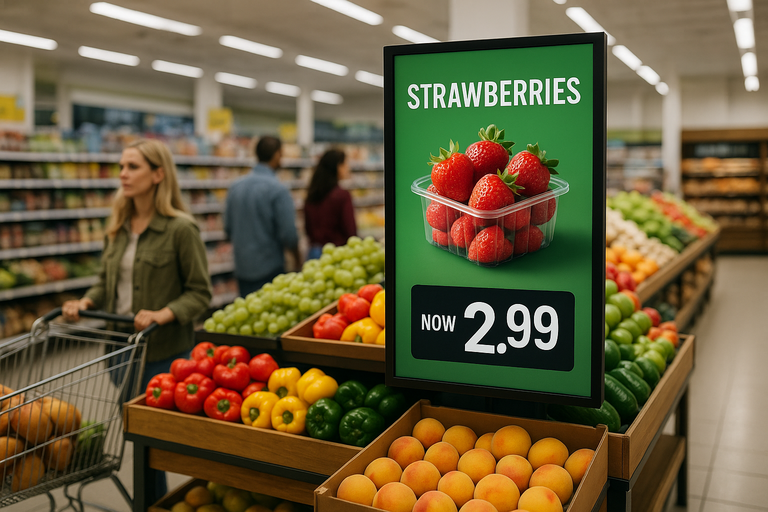
Real-World Examples in Australia
Supermarkets use AI-powered signage to dynamically price or promote items. Gyms rotate motivational content, schedules, and personalised reminders. Restaurants instantly update menus with AI-generated images.
Smart cities like Brisbane and Melbourne deploy signage integrated with AI analytics to display context-aware updates. Platforms such as Sign Inspire show how combining hardware, CMS, and AI analytics delivers not just engagement, but measurable results.
Specs That Matter for Digital Signage
- Brightness: Outdoor displays need 2,500–5,000 nits. Indoor usually requires 500–1,000.
- IP Rating: Outdoor signage should be IP65-rated for dust and water protection.
- Operating Temperature: Commercial-grade ranges from -20°C to 50°C.
- Lifespan: 50,000–100,000 hours for 24/7 use.
- Processor & RAM: At least quad-core with 4GB+ RAM for AI analytics.
- Connectivity: Ensure Ethernet, Wi-Fi, and ideally 5G.
Privacy and Compliance
Ethical data use is crucial. In Australia, Australian Privacy Principles (APPs) apply. Reputable digital signage platforms prioritise anonymised analytics, transparency, and secure storage. For international compliance, GDPR and CCPA also guide data handling.
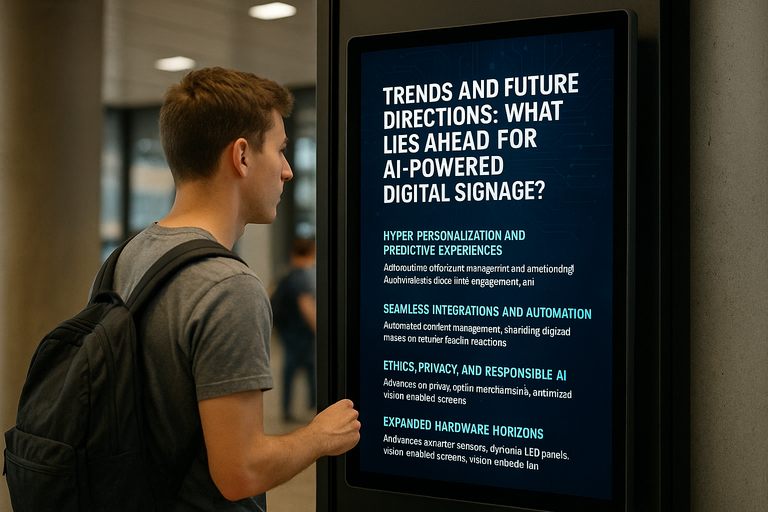
Emerging Trends
- Hyper-Personalisation: Content tailored at individual level using predictive analytics.
- Automation: AI-integrated CMS platforms adjust content in real time.
- Conversational Screens: Voice-activated signage with natural language processing.
- Edge AI: More processing power at the device level for faster, private analytics.
- Hardware Innovation: Smarter sensors, LED panels, and AI-enabled players.
Measuring ROI
- Engagement: Dwell time, attention rates, and interactions.
- Sales Lift: Track increases in promoted product sales.
- Efficiency: Lower printing costs, fewer staff inquiries.
- Brand Impact: Recall, QR code traffic, and social mentions.
Implementation Checklist
- Define objectives and target audience.
- Select commercial-grade displays and robust players.
- Plan for strong network and sensor integration.
- Use user-friendly CMS with built-in AI analytics.
- Create dynamic, multilingual content.
- Train staff, ensure compliance, and start with pilot projects.
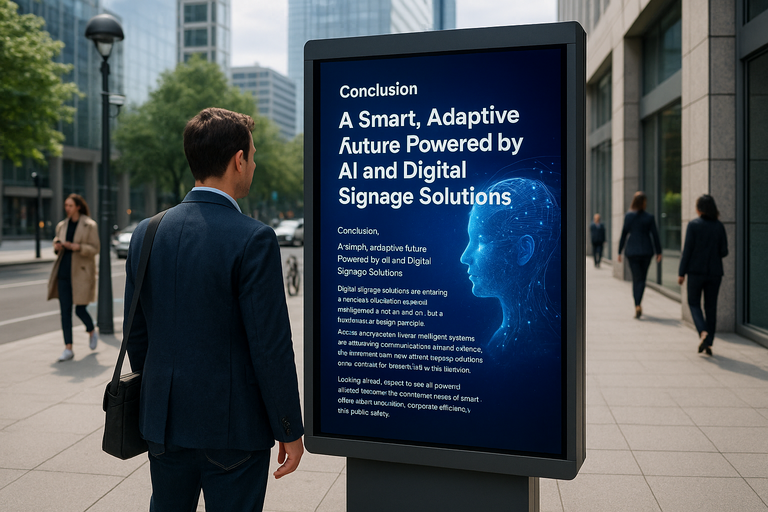
Conclusion
Digital signage solutions are entering a new era where AI is not an add-on, but a core feature. Across industries, these systems enhance communication, drive revenue, and deliver personalisation that once seemed futuristic.
Looking ahead, AI-powered digital signage will be the connective tissue of smart cities, retail innovation, and corporate efficiency. Businesses that embrace this synergy today will lead in engagement tomorrow.
FAQs About AI-Powered Digital Signage Solutions
Q: What are AI-powered digital signage solutions?AI-powered digital signage integrates artificial intelligence to adapt content in real time, analyse audiences anonymously, and automate management.
Q: How do these solutions benefit businesses?
They enhance engagement, increase sales with targeted promotions, improve efficiency with automation, and provide data-driven insights.
Q: Is privacy maintained?
Yes. Platforms follow APPs, GDPR, and CCPA, using anonymised data and ensuring transparent, ethical practices.
Q: What content can AI generate?
AI creates text, images, and simple video variations for campaigns, tailored to real-time data.
Q: What is the ROI?
ROI varies but may include up to 30% sales lift, reduced manual costs, and measurable engagement improvements.

